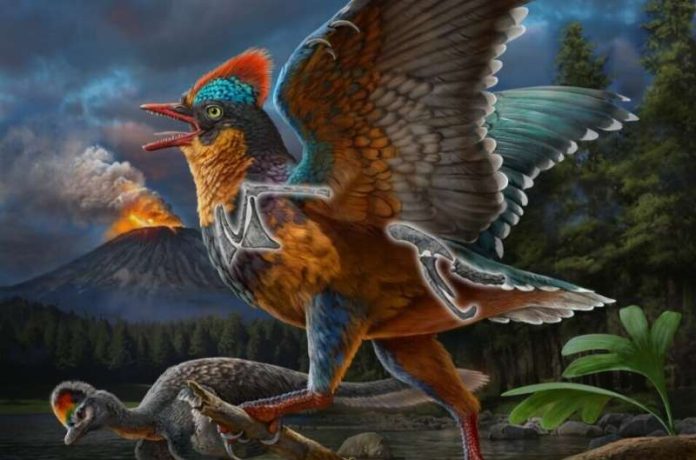
A team of paleontologists from the Institute of Vertebrate Paleontology and Paleoanthropology (IVPP) at the Chinese Academy of Sciences has made a groundbreaking discovery in southeastern China. They unearthed two fossilized bird specimens in 149-million-year-old Jurassic rocks from Fujian Province.
These fossils help fill a gap in the early history of bird evolution, providing new evidence that birds had already diversified by the end of the Jurassic period. The findings were recently published in Nature.
Why This Discovery Matters
Birds are the most diverse group of land vertebrates today, but their origins have been difficult to trace due to a lack of well-preserved fossils from the Jurassic period (about 145 million years ago). Up until now, Archaeopteryx was the only widely accepted Jurassic bird.
Though it had feathered wings, Archaeopteryx looked very similar to small dinosaurs, particularly because of its long, reptilian tail—a feature absent in modern birds.
Recent studies have even questioned whether Archaeopteryx was truly a bird or if it belonged to a group of bird-like dinosaurs. This uncertainty has left scientists wondering whether any clear evidence of true Jurassic birds exists.
The Newly Discovered Bird: Baminornis zhenghensis
The research team identified one of the fossils as a new species, naming it Baminornis zhenghensis. This ancient bird had a mix of features that bridge the gap between dinosaurs and modern birds. Its shoulders and pelvis were similar to those of more advanced birds, but its hand structure resembled that of non-bird dinosaurs.
One of its most remarkable features was its short, fused tail bone, known as a pygostyle. In living birds, the pygostyle supports tail feathers and plays a role in flight.
Until now, the earliest known birds with short tails came from the Early Cretaceous period, about 20 million years after Baminornis zhenghensis. This new discovery suggests that short-tailed birds appeared much earlier than previously thought.
“The presence of a pygostyle in a Jurassic bird completely changes our understanding of when modern bird features began to appear,” said Professor Wang Min, the study’s lead author. “It pushes back the timeline of bird evolution significantly.”
The Mystery of the Second Fossil
The second fossil found in Fujian Province is incomplete, consisting only of a wishbone (furcula). To determine its identity, the researchers compared its shape to that of both early birds and bird-like dinosaurs.
Their analysis suggests it belonged to Ornithuromorpha, a diverse group of birds that thrived in the Cretaceous period. However, because the fossil is poorly preserved, the team decided not to name a new species until more evidence is found.
A Major Step Forward in Bird Evolution Research
This discovery strengthens the idea that birds had already begun to diversify by the late Jurassic period. The presence of Baminornis zhenghensis suggests that key bird features, such as shorter tails, evolved much earlier than previously believed.
This finding also provides new support for the theory that early birds went through a phase of “mosaic evolution,” where different body parts changed at different rates.
Additionally, with growing doubts about Archaeopteryx being a true bird, Baminornis zhenghensis may now be one of the oldest confirmed birds known to science.
“If we reconsider the uncertainty around Archaeopteryx, we have no doubt that Baminornis zhenghensis represents a true Jurassic bird,” said Dr. Zhou Zhonghe, a co-author of the study.
What’s Next?
More fossils will be needed to confirm whether the second specimen truly belonged to Ornithuromorpha and to better understand how birds evolved from their dinosaur ancestors. The researchers hope that further excavations in China will uncover additional specimens that could fill in the missing details of early bird evolution.
This discovery not only rewrites the timeline of bird evolution but also offers new insights into how birds developed key traits that allowed them to thrive for millions of years.
The research findings can be found in Nature.
Copyright © 2025 Knowridge Science Report. All rights reserved.



